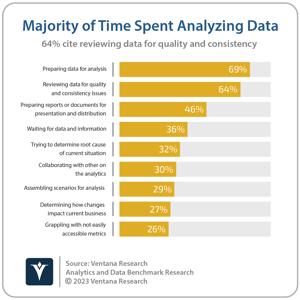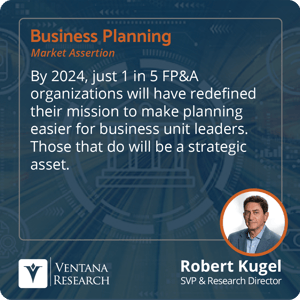A century ago, the big breakthrough in telephones was the ability to dial your party’s number directly. Dialing became necessary when enough people had telephones to require a shift from people-assisted to fully automated connections. But direct dialing was only a local option – you still needed an operator to make long-distance calls. In the 1920s, commenting on their forecast for the expected growth of long-distance calling, the analysts at Bell Laboratories concluded that by midcentury, the only way the system could handle expected growth on the network was for everyone to be their own telephone operator. This required the development of area codes and a switching system to allow direct dialing everywhere in North America. On November 10, 1951, the first self-dialed long-distance call took place. Technology made it possible for everyone to be their own long-distance telephone operator.
Today, technology is about to make it possible for everyone to be their own business and financial analyst. To achieve this potential, software vendors must make it easy for everyone to get useful, reliable results. When this happens, an organization’s financial planning and analysis team must evolve its mission to remain useful and relevant.
Organizations hire analysts because innate analytical talents are not evenly distributed. Analysts know how to assemble information from necessary sources and, by applying critical thinking, logical reasoning, pattern recognition and statistical techniques, they draw conclusions and identify issues to promote informed and objective decision-making.
Information technology has facilitated the work of analysts almost from the start. Today there are a wealth of tools analysts use to streamline their work and maximize their abilities. Beyond mechanical computational automation, systems now facilitate data acquisition, automate periodic reporting, present real-time information and communicate more effectively using visualizations. Yet to be truly effective, the tools require analytical abilities to enable the user to go beyond the basics, such as period-to-period comparisons, straightforward descriptions of conditions and simple periodic report distribution.
Artificial intelligence has the potential to make everyone an analyst by employing algorithms to rapidly and continuously review data and improve situational awareness, understand the underlying sources of opportunities and issues, offer options for decision-making and examine alternative courses of action and understand the potential outcomes. Like most significant technological advancements, this won’t happen overnight, but I think it will happen faster than most believe. Basic analytical capabilities are likely to be widely available as part of the feature set of general-purpose tools and also provided by software vendors as part of business applications. One can be forgiven for thinking that these features were promised and promoted in the past with little to show for it. However, analytics technology continues to advance steadily, and we’ve finally arrived at a point where conditions are capable of transformational change.
One difference now is the growing availability of easily accessed, accurate, consistent and timely data, which is a core requirement for practical and useful application of analytics and even more essential for AI. Increasingly, application vendors are incorporating what I call a data pantry, although each vendor has a unique name for this form of data fabric. It’s a method of data storage (and the technology and process blueprint for its construction) created for a specific set of users and use cases in business-focused software. A data pantry makes it possible to train analytical systems to reliably provide deeper analytical insights than is currently possible, generate forecasts and create sets of scenarios to explore various courses of action. It will make it possible to train generative AI systems on internal data and documents to create reliable narratives.
There’s been a great deal of talk about advanced analytics for at least 20 years. Still, our Office of Finance Benchmark Research found that only 24% of organizations report using predictive analytics regularly. There are two  likely explanations for this lack of penetration. One is that, to be useful and reliable, predictive models must be trained and retrained regularly using a consistent, relevant and reliable set of data. Techniques for automatically creating such data sources (in effect, data pantries) have only recently become available but will grow more common as vendors address the demand for AI capabilities.
likely explanations for this lack of penetration. One is that, to be useful and reliable, predictive models must be trained and retrained regularly using a consistent, relevant and reliable set of data. Techniques for automatically creating such data sources (in effect, data pantries) have only recently become available but will grow more common as vendors address the demand for AI capabilities.
A second related issue is a lack of available time for analysts to perform this type of work. Our Analytics and Data Benchmark Research found that analysts spend the majority of their time on data preparation, leaving much less time for them to do more useful work. Here, too, the increasing availability of dedicated data stores will substantially cut the time analysts spend on purely mechanical work. Vendors must incorporate basic analytical routines into software, enabling business analysts to create models regardless of their abilities.
Technology will change the nature of the work that the FP&A organization performs, freeing up time now spent on data preparation, routine analyses and perfunctory report writing. As that happens, there will be a need to change the group’s mission, especially for those FP&A leaders that want to play a more strategic role in their organization. One important role is becoming the go-to resource for modeling, outlining and coordinating planning processes, developing and managing performance measures and metrics, in addition to reporting and communications. While that somewhat describes what the group does now, FP&A will have the time and tools to do more of it and do it broadly across all parts of their organization.
In the future envisioned by the analysts at Bell Laboratories a century ago, people were not literally going to be operators; they would utilize the systems and technology that enabled them to act like a phone operator. Similarly, in the not-too-distant future, everyone in an organization can be an analyst by using an “analyst-in-a-box” to do the work. The FP&A team will build the models and craft the processes that empower executives and managers to improve their situational awareness, investigate issues, revise plans rapidly and explore the consequences of different scenarios and potential actions. It will be the application of FP&A analysts’ modeling skills, critical thinking, logical reasoning and understanding of the business to build the analyst-in-a-box, utilizing systems provided by software vendors. For example, existing technology makes it possible to make planning and budgeting easier. However, Ventana Research asserts that by 2024, just one in five FP&A organizations will have redefined their mission to make planning easier for business unit leaders. Those that do will be a strategic asset.
in the not-too-distant future, everyone in an organization can be an analyst by using an “analyst-in-a-box” to do the work. The FP&A team will build the models and craft the processes that empower executives and managers to improve their situational awareness, investigate issues, revise plans rapidly and explore the consequences of different scenarios and potential actions. It will be the application of FP&A analysts’ modeling skills, critical thinking, logical reasoning and understanding of the business to build the analyst-in-a-box, utilizing systems provided by software vendors. For example, existing technology makes it possible to make planning and budgeting easier. However, Ventana Research asserts that by 2024, just one in five FP&A organizations will have redefined their mission to make planning easier for business unit leaders. Those that do will be a strategic asset.
Business and financial analyst who want to play a more strategic role in their organization must understand how to utilize AI and the technology to make everyone an analyst. That requires the FP&A group to redefine its mission to reflect the significant changes that technology brings to their daily workload. They will be more productive and able to redefine their position to be more important and more consequential.
Regards,
Robert Kugel

 likely explanations for this lack of penetration. One is that, to be useful and reliable, predictive models must be trained and retrained regularly using a consistent, relevant and reliable set of data. Techniques for automatically creating such data sources (in effect, data pantries) have only recently become available but will grow more common as vendors address the demand for AI capabilities.
likely explanations for this lack of penetration. One is that, to be useful and reliable, predictive models must be trained and retrained regularly using a consistent, relevant and reliable set of data. Techniques for automatically creating such data sources (in effect, data pantries) have only recently become available but will grow more common as vendors address the demand for AI capabilities. in the not-too-distant future, everyone in an organization can be an analyst by using an “analyst-in-a-box” to do the work. The FP&A team will build the models and craft the processes that empower executives and managers to improve their situational awareness, investigate issues, revise plans rapidly and explore the consequences of different scenarios and potential actions. It will be the application of FP&A analysts’ modeling skills, critical thinking, logical reasoning and understanding of the business to build the analyst-in-a-box, utilizing systems provided by software vendors. For example, existing technology makes it possible to make planning and budgeting easier. However, Ventana Research asserts that by 2024, just one in five FP&A organizations will have redefined their mission to make planning easier for business unit leaders. Those that do will be a strategic asset.
in the not-too-distant future, everyone in an organization can be an analyst by using an “analyst-in-a-box” to do the work. The FP&A team will build the models and craft the processes that empower executives and managers to improve their situational awareness, investigate issues, revise plans rapidly and explore the consequences of different scenarios and potential actions. It will be the application of FP&A analysts’ modeling skills, critical thinking, logical reasoning and understanding of the business to build the analyst-in-a-box, utilizing systems provided by software vendors. For example, existing technology makes it possible to make planning and budgeting easier. However, Ventana Research asserts that by 2024, just one in five FP&A organizations will have redefined their mission to make planning easier for business unit leaders. Those that do will be a strategic asset.








